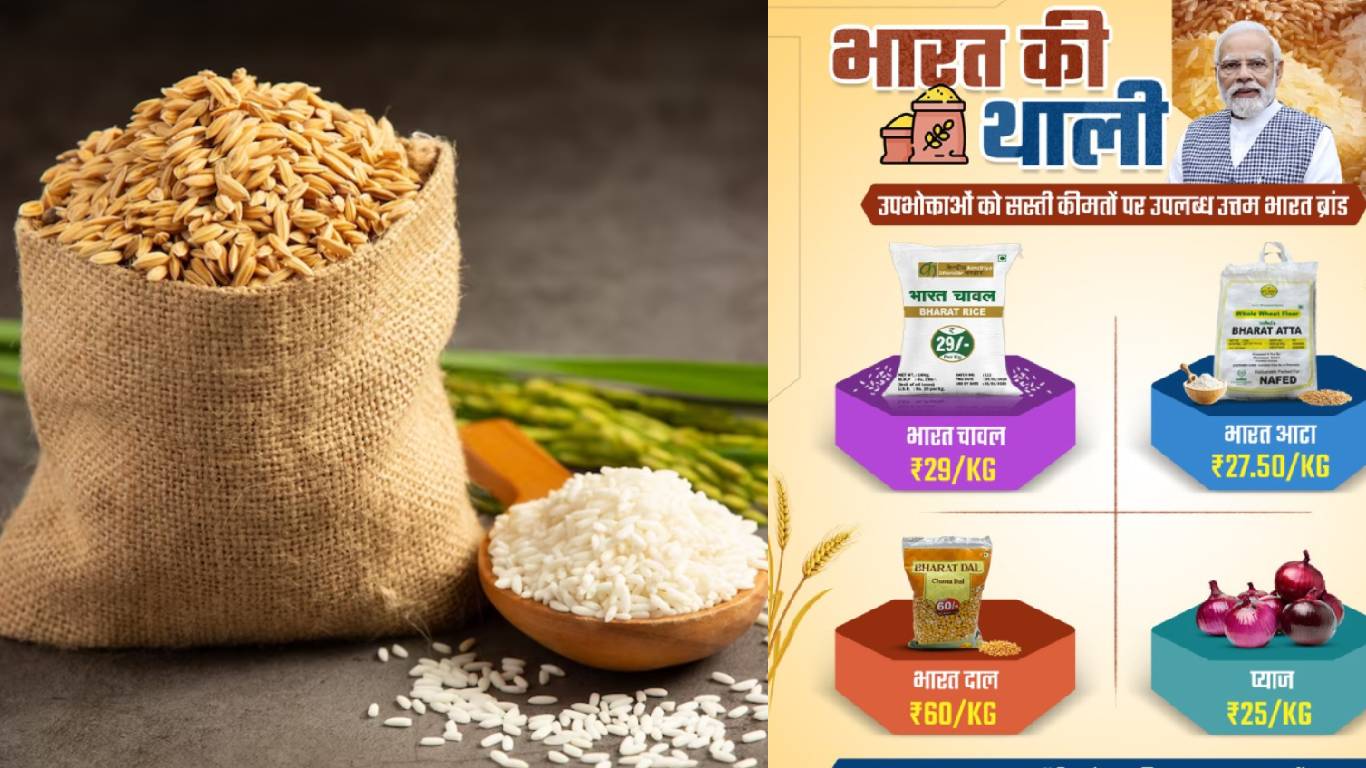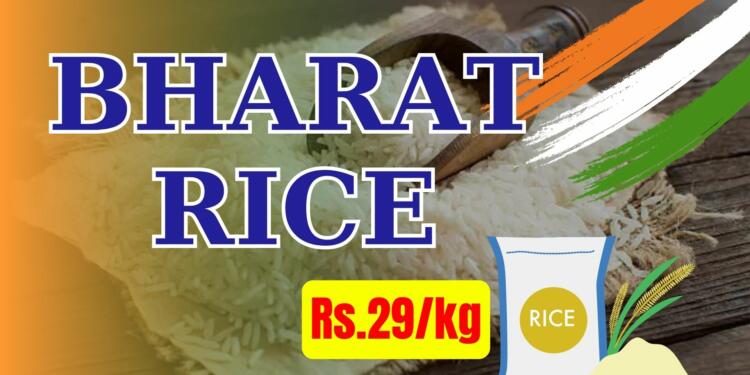In a nation where rice is not just a staple but a cultural cornerstone, the introduction of “Bharat Rice” emerges as a timely and much-needed intervention. With its roots tracing back to ancient times, rice holds a revered place in India’s historical and culinary heritage. However, recent challenges, including soaring rice prices and food affordability concerns, have underscored the necessity for innovative solutions. “Bharat Rice” is a government initiative aimed at not only stabilizing rice prices but also ensuring access to quality grains for all sections of society. Through subsidised pricing, convenient packaging, and an efficient distribution network, Bharat Rice has the potential to alleviate the economic strain on households and bolster food security across the nation. Building on the success of previous initiatives under the “Bharat” brand, the introduction of “Bharat Rice” heralds a promising future of affordability, accessibility, and nutritional sustenance for millions of Indians.
Importance of Rice in India
Rice holds an esteemed position within India’s historical and cultural tapestry, with its cultivation dating back to antiquity, as evidenced by archaeological findings dating back to 6500 BC. These discoveries, particularly in fertile regions like the Ganges River valley, underscore the ancient origins of rice farming in the Indian subcontinent.
Throughout India’s rich history, rice has played a pivotal role in cultural and religious traditions. References to rice can be found in ancient texts such as the Yajur Veda, compiled around 1800 BC, highlighting its significance in rituals and daily life. Rice is deeply intertwined with notions of fertility and health across India’s diverse cultural landscape, symbolizing prosperity and abundance.
India’s status as the second-largest producer and consumer of rice globally further underscores its importance in the country’s food security landscape. With over 50% of the population relying on rice as a staple food, it forms an integral part of the diet for millions of Indians. The country’s diverse culinary traditions, spanning 29 official languages, further emphasize the centrality of rice in Indian cuisine.
Furthermore, India’s ranking as the second-largest producer of rice after China highlights the sheer magnitude of its production and consumption. While China consumes the most rice globally, India closely follows, with approximately 118 million metric tons consumed annually.
Current Challenges
India has faced a notable surge in rice prices, which has raised significant concerns about food affordability, particularly among the common populace. This escalation in rice prices has been attributed to various factors, including supply chain disruptions, adverse weather conditions affecting crop yields, and increased transportation costs. As a result, many middle-class and economically disadvantaged households are grappling with the challenge of meeting their dietary needs amidst rising food costs.
The impact of these rising rice prices is especially pronounced among middle-class families, whose budgets are already stretched thin due to various other economic pressures. For economically disadvantaged households, the situation is even more dire, as they often struggle to afford basic necessities, including food. The disproportionate burden of food inflation on these vulnerable segments of society exacerbates existing inequalities and undermines efforts to alleviate poverty and improve living standards.
In response to these challenges, the government has taken proactive measures to address food inflation and ensure access to essential food items, including rice. Initiatives such as the launch of “Bharat Rice” at subsidised rates aim to provide relief to consumers and mitigate the impact of rising food prices on household budgets. Additionally, efforts to streamline distribution channels and enhance market efficiency are being pursued to ensure that rice and other essential food items reach consumers at affordable prices.
“Bharat Rice” Initiative
The launch of “Bharat Rice” by the government is a strategic response to the escalating concerns regarding food affordability and rising rice prices in India. The primary rationale behind this initiative lies in its subsidised pricing strategy, which aims to provide relief to consumers grappling with the economic strain caused by increasing food costs. By offering rice under the “Bharat” brand at a subsidised rate of Rs 29 per kg, the government seeks to alleviate the financial burden on households, particularly those belonging to the middle class and economically disadvantaged sections of society.
One of the key features of “Bharat Rice” is its availability in convenient 5 kg and 10 kg packs. This packaging strategy ensures accessibility to a wide range of consumers, catering to both small and large households. The availability of rice in these pack sizes not only facilitates ease of purchase but also accommodates varying consumption needs, making it a practical choice for diverse households across the country.
In terms of distribution, the government has devised a comprehensive mechanism to ensure widespread access to “Bharat Rice.” This involves the active involvement of government agencies such as the Food Corporation of India (FCI), the National Agricultural Cooperative Marketing Federation of India Ltd (Nafed), and the National Cooperative Consumers’ Federation of India (NCCF). These agencies play a pivotal role in the procurement, packaging, and distribution of rice under the “Bharat” brand. Additionally, the government has deployed mobile vans equipped with “Bharat Rice” for direct sales across different regions, ensuring reach even in remote areas. Furthermore, leveraging e-commerce platforms for the sale of “Bharat Rice” enhances accessibility for urban consumers, enabling easy online ordering and doorstep delivery.
Impact and Potential
The introduction of “Bharat Rice” holds significant potential to address key challenges related to rice prices and food security, particularly for the middle class and economically vulnerable sections of society.
“Bharat Rice” has the potential to stabilize rice prices by offering the grain at subsidised rates. By providing affordable rice options to consumers, the initiative can help mitigate the impact of fluctuating market prices, thus ensuring greater stability in the availability and affordability of this essential staple food. This stabilizing effect is crucial for middle-class families and economically disadvantaged households, who often bear the brunt of price volatility in food markets.
Bharat Brand
The success of previous initiatives like “Bharat Atta” and “Bharat Chana” underscores the potential effectiveness of the “Bharat” branding strategy in curbing inflation and promoting affordability. These initiatives have demonstrated the government’s commitment to addressing food security concerns by offering quality food items at subsidised rates. The positive outcomes of these initiatives serve as encouraging precedents for the impact that “Bharat Rice” could have on improving access to affordable food options for consumers across socio-economic strata.

Moreover, consumer feedback on other “Bharat” branded products has been overwhelmingly positive, indicating the quality and acceptability of these items among the populace. Positive experiences with products like “Bharat Atta” and “Bharat Chana” have instilled confidence in consumers regarding the reliability and nutritional value of “Bharat” branded food items. This positive reception bodes well for the potential success of “Bharat Rice,” as consumers are likely to trust and embrace the new offering based on their past experiences with other products under the same brand.
In conclusion, the introduction of “Bharat Rice” marks a significant milestone in India’s quest for food security and affordability. With its roots deeply entrenched in the nation’s cultural and historical heritage, rice holds unparalleled importance in the lives of millions of Indians. By addressing pressing challenges such as rising prices and ensuring access to quality grains for all, “Bharat Rice” embodies the government’s commitment to the welfare of its citizens. Leveraging the success of previous initiatives under the “Bharat” brand, this intervention heralds a promising future of stability, accessibility, and nutritional sustenance for households across the socio-economic spectrum. As “Bharat Rice” paves the way for a more secure and inclusive food landscape, it stands as a testament to India’s resilience and determination in overcoming adversity.
Also Read: From Reserves to Revenue: India’s Oil Cavern Lease with Abu Dhabi































